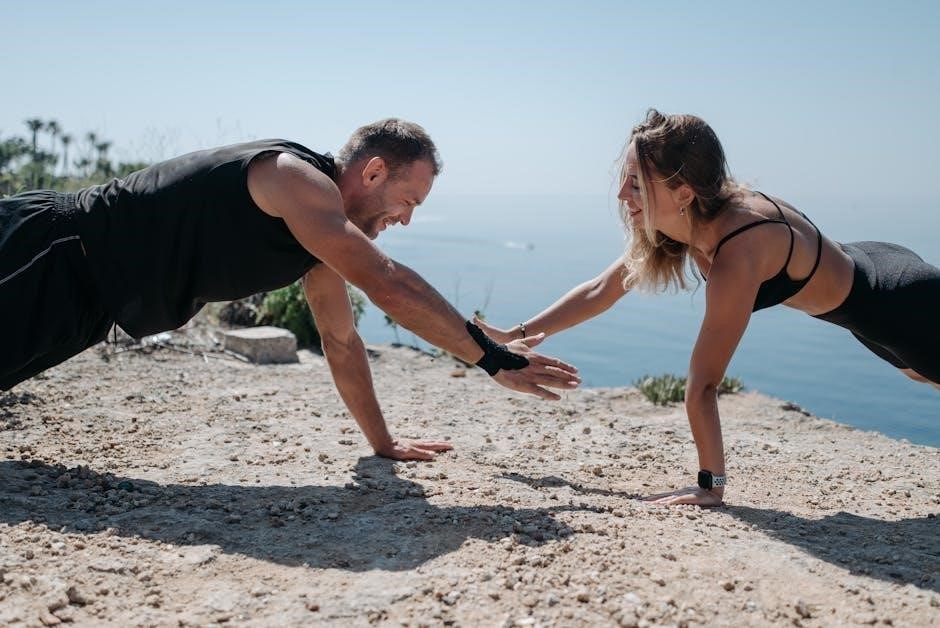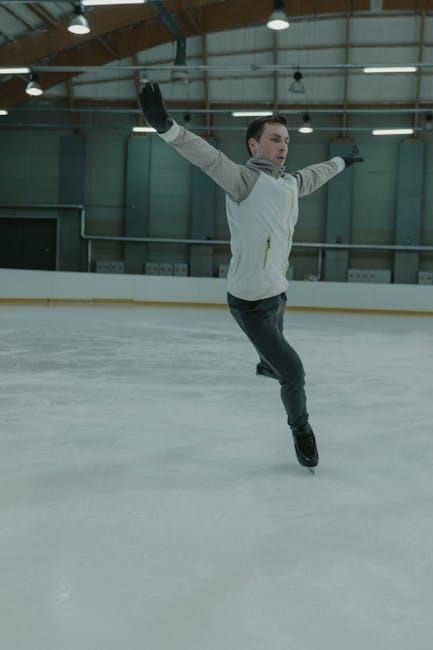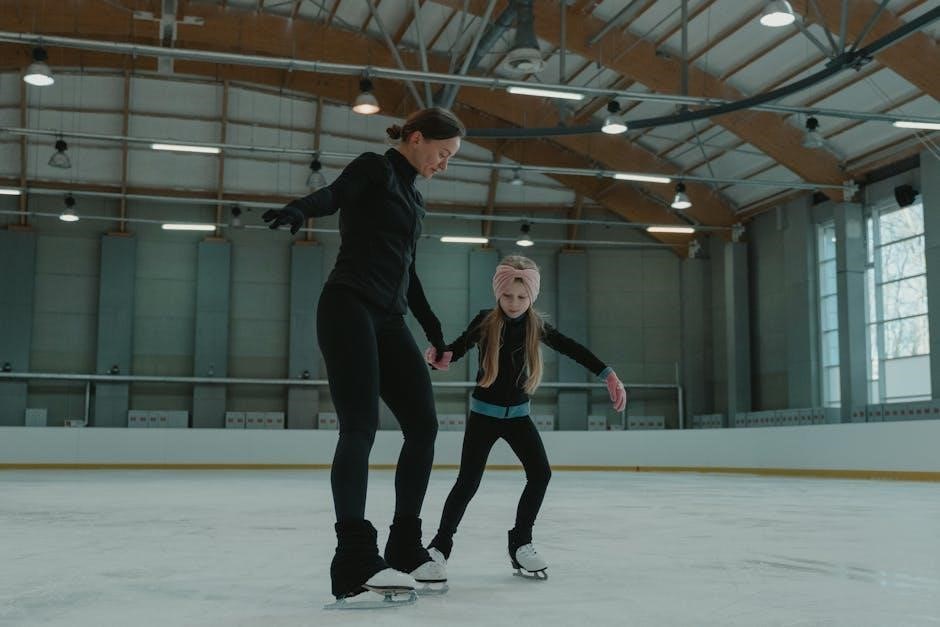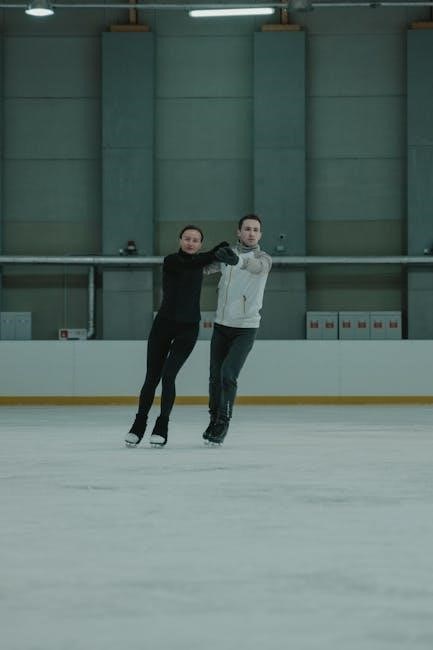Definition of Proprioception
Proprioception is the body’s internal system that senses position, orientation, and movement․ It relies on proprioceptors in muscles, tendons, and joints to enable smooth, coordinated actions without conscious thought․
Understanding Proprioception and Its Role in Movement
Proprioception is the body’s ability to sense its position, orientation, and movement in space․ It relies on proprioceptors in muscles, tendons, and joints to transmit signals to the brain, enabling precise coordination of movements․ This subconscious system is vital for balance, posture, and executing complex actions like walking or sports without conscious thought․ Enhanced proprioception improves motor control, reduces injury risk, and supports overall physical function, making it a cornerstone of athletic performance and rehabilitation strategies․ Effective proprioception ensures smooth, efficient movement and stability in daily activities and sports․

Importance of Proprioception in Movement and Balance
Proprioception is crucial for movement and balance, enabling the body to maintain posture, prevent falls, and execute precise movements․ It enhances stability and coordination naturally․
How Proprioception Affects Pain, Function, and Injury Prevention
Proprioception plays a vital role in reducing pain and improving function by enhancing sensory feedback, which helps the body move more efficiently․ Improved proprioception reduces stiffness and discomfort, allowing for smoother, more coordinated movements․ It also minimizes injury risk by increasing joint stability and awareness of body positioning․ Strengthening proprioception through targeted exercises can lead to better overall physical performance and reduce the likelihood of reinjury․ This makes it a cornerstone of rehabilitation and injury prevention programs, particularly in sports and physical therapy settings․ Regular practice enhances neuromuscular control, promoting long-term mobility and resilience․

Proprioception Exercises
Common proprioception exercises include single-leg balances, seated arch and flatten, and foot proprioception drills․ These activities target specific areas to enhance body awareness and coordination effectively․
Single-Leg Balance Exercises for Improving Proprioception
Single-leg balance exercises are fundamental for enhancing proprioception․ Stand on one leg, keeping the other foot lifted, and maintain balance for as long as possible․ Eyes can be open or closed to increase difficulty․ This exercise strengthens the connection between the brain, muscles, and joints, improving stability and reducing injury risk․ Start with short durations and gradually increase the time as balance improves․ Perform 3 sets on each leg, ensuring proper posture and engagement of core muscles for optimal results․
Seated Arch and Flatten Exercise
The seated arch and flatten exercise targets pelvic proprioception․ Sit with feet flat, knees bent, and hands on thighs․ Arch the lower back, tilting pelvis backward, then flatten it, tilting forward․ Repeat for 10-15 repetitions, focusing on controlled movements․ This exercise enhances awareness of pelvic position and improves core stability, essential for overall balance and posture․ Perform 2-3 sets, breathing naturally, to strengthen the connection between the pelvis and surrounding muscles, aiding in injury prevention and functional movement․
Foot Proprioception and Balance Exercises
Foot proprioception exercises focus on improving sensory awareness and balance․ Activities include rolling a ball under the foot, using a wobble board, or performing toe curls․ These exercises stimulate proprioceptors in the feet, enhancing stability and coordination․ Regular practice reduces injury risk and improves mobility․ Start with supported exercises, gradually progressing to single-leg stands or heel-to-toe walking․ Perform these exercises 2-3 times daily, holding positions for 10-30 seconds, to enhance foot awareness and overall balance capabilities, crucial for daily activities and athletic performance․
The Role of the Core in Proprioception
The core acts as the body’s center, stabilizing movements and aiding balance․ Strengthening core muscles enhances proprioceptive feedback, improving overall movement efficiency and reducing injury risks․
Why Core Strengthening Is Essential for Proprioceptive Training
Core strengthening is vital for proprioceptive training as it enhances stability and balance․ A strong core provides a foundation for precise movements, improving the body’s ability to sense its position and motion․ This stability allows proprioceptors to function more effectively, reducing injury risks and enhancing coordination․ Core exercises, such as planks and bridges, help develop the necessary strength and awareness, making them a fundamental part of proprioceptive training programs;
Why Proprioceptive Exercises Are Taught in a Certain Order
Proprioceptive exercises follow a structured progression, starting from the core and moving outward․ This approach ensures stability and proper neuromuscular communication, enhancing effectiveness and safety․
Progressing from the Core Outwards
Proprioceptive exercises are taught in a specific order to ensure proper neuromuscular communication․ Starting with the core, such as the pelvis and lower back, builds stability and awareness․ This foundation allows for better proprioceptive feedback in the extremities, like the feet and legs․ Exercises like the Seated Arch and Flatten focus on pelvis movement, while Standing Foot Proprioception targets balance․ Progressing outward enhances functional movement and reduces injury risk by improving coordination and joint stability․ This structured approach ensures effective retraining of proprioceptors, leading to improved overall balance and motor control․
Stretching and Strengthening Exercises
Stretching improves flexibility and range of motion, while strengthening builds muscle support around joints․ Both enhance proprioception by improving joint stability and neuromuscular communication․
Improving Muscular Strength and Functional Abilities
Strengthening exercises target muscles around joints, enhancing stability and proprioceptive feedback․ By improving neuromuscular coordination, these exercises restore functional abilities, reducing injury risks and promoting efficient movement patterns․ Regular practice ensures muscles work synergistically, supporting overall physical performance and daily activities․ This approach is particularly beneficial for rehabilitation and sports training, as it rebuilds strength and proprioceptive accuracy, enabling individuals to perform tasks with greater ease and confidence․ Consistency in such exercises fosters long-term improvements in both strength and functional capacity․
Progression of Proprioception Exercises
Exercises progress from simple, supported movements to more complex, dynamic activities․ This structured approach ensures effective rehabilitation and enhances balance, stability, and overall proprioceptive function over time․
A Structured Approach to Rehab and Training
A structured approach to proprioceptive exercises ensures gradual progression, starting with simple, supported movements and advancing to dynamic activities․ This method helps rebuild neural pathways and muscle memory, enhancing balance and stability․ Initial exercises, such as single-leg balances or seated arch and flatten, focus on core stability and basic proprioception․ As strength and coordination improve, exercises progress to more complex tasks, like wobble board training or functional movements․ Supervised by a therapist, this structured progression minimizes injury risk and maximizes recovery, preparing individuals for daily activities and sports․ Consistency and patience are key to achieving lasting results․
Duration and Frequency of Exercises
Proprioceptive exercises should be performed 2-3 times daily, with each session lasting 5-10 minutes․ Consistency is key for optimal progress and injury prevention․
Recommended Time Frames for Proprioceptive Training
Proprioceptive training should be conducted 2-3 times daily, with sessions lasting 5-10 minutes․ Exercises should be performed pain-free, starting as soon as full weight-bearing is possible․ Progression begins with simple activities like single-leg balance and gradually incorporates more complex movements․ Consistency is crucial, with a minimum of 6-8 weeks of regular practice to enhance strength, balance, and functional abilities․ Incorporating exercises into daily routines, such as during chores, can accelerate improvement and reduce injury risks over time․

The Role of Proprioception in Sports Injury Prevention
Proprioception reduces injury risks by enhancing neuromuscular control and muscle strength, crucial for athletes to sense body positioning and move efficiently, making it vital for injury prevention․
Reducing Injury Risks Through Proprioceptive Training
Proprioceptive training strengthens the connection between sensors and muscles, improving balance and stability․ This reduces injury risks by enhancing neuromuscular control and joint stability, especially in sports․ Regular exercises like single-leg balances and core workouts help athletes maintain proper body positioning and respond to movement challenges effectively․ Over time, this training fosters muscle endurance and coordination, creating a protective mechanism against injuries․ Consistent practice is essential for long-term injury prevention and optimal performance․

Activities Beyond Structured Exercises
Daily activities like cleaning, waiting, or chores can incorporate proprioception․ For example, balancing on one leg while brushing teeth or standing on a soft surface during tasks enhances awareness and stability naturally․
Incorporating Proprioception into Daily Life and Physical Activities
Incorporating proprioceptive exercises into daily activities enhances balance and coordination naturally․ Simple tasks like standing on one leg while brushing teeth or balancing during household chores can improve awareness․ Walking on uneven surfaces or using a balance board during regular routines also strengthens proprioception․ These subtle additions to daily life make proprioceptive training effortless and effective, promoting better body awareness and reducing injury risks without formal exercise sessions․
Consistent practice of proprioception exercises enhances body awareness, improving balance and reducing injury risks․ Regular training fosters long-term benefits for overall physical stability and coordination․
Maximizing the Benefits of Proprioception Exercises
Consistency and gradual progression are key to maximizing the benefits of proprioception exercises․ Starting with core stabilization ensures a strong foundation for balance and coordination․ Incorporating daily activities, such as single-leg stands during routine tasks, enhances real-world application․ Combining exercises with strength training further improves overall stability and functional movement․ Over time, this integrated approach reduces injury risk, boosts confidence, and optimizes physical performance in both rehabilitative and athletic contexts․
